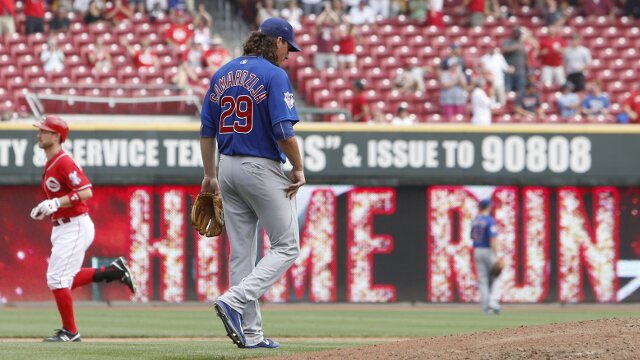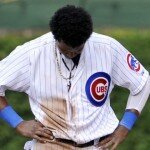Even Jaws might be impressed with Jeff Samardzija in 2014.
All signs point to the de facto Chicago Cubs ace pitching exactly like one this upcoming season, which could help net a long-term contract with the team.
For the past two seasons, Samardzija has actually been very good, ignoring his debacle of a second half in 2013, which was punished by a .324 batting average on balls in play (BABIP).
At 29, the Shark pitched more than 200 innings for the first time in his career, which might put him on some watch lists for a down year, but ultimately at 6-foot-5, 225 pounds, his frame is about as durable as they come.
The telltale signs that, barring injury, Samardzija is going to be ace quality this year for the Cubs can be found in a few different sets of stats throughout his career.
FIP: Fielding Independent Pitching, which says what a pitcher’s ERA should have looked like if balls in play were played at league average. It grades pitchers for what they can control: walks, home runs, strikeouts and hit by pitches, with the league average hovering around 4.00.
Since becoming a regular full-time starter in 2012, Samardzija has been above average in terms of FIP. In a combined 27 appearances and five starts in 2009 and 2010, he posted FIP marks of 5.90 and 8.25 respectively.
In 2012, he registered a 3.55 FIP to accompany his 3.81 ERA and came back in 2013 with a 3.77 FIP and a 4.34 ERA. While his FIP dropped some last season, Samardzija still sat above league average, but FIP also isn’t the only stat to look at.
Strikeout and walk rates: Early in his career, as a reliever and minor league starter, Samardzija had very little control and struggled to strike batters out at the major league level, with the exception of a small sample size in 2008.
In 2011, as a reliever, Samardzija struck out batters at a rate of 8.90 K/9 but with a troubling 5.11 BB/9. The next year his strikeout rate jumped to 9.27 K/9 and his walks were more than cut in half at 2.89 BB/9. In 2013, those numbers didn’t change much, finishing at 9.01 K/9 and 3.29 BB/9.
What all this says is that Samardzija is refining his pitches and really learning how to miss bats as he progresses.
Ground ball rate: An important factor in limiting home runs, especially when winds are blowing out at Wrigley Field, is forcing ground balls.
In his first full season with the Cubs in 2011, he forced ground balls 41 percent of the time out of the bullpen. That number leaped to 44.6 percent in 2012 and 48.2 percent in 2013. While his home run-to-fly ball rate (HR/FB) has climbed slightly, it has always been on the worse end of the spectrum and baseball logic and trends support the notion his HR/FB rate should deflate toward the league average mark.
While Samardzija might not have a record that looks any better than his 17-26 mark over the past year, there is significant statistical support to say he could finally have a breakout season in 2014.
It’s possible he does enough heading into his age-30 season to lock down some sort of long-term contract with the Cubs or bring enough value come July 31 to move to a contender.
Jerry Burnes is a Chicago Cubs and MLB prospects writer for Rant Sports. Follow him on Twitter @JerryBurnes, “Like” him on Facebook, and add him to your network on Google.























